In the world of floristry beauty is an everyday thing, but as with most things in life, beauty is often in the eye of the beholder.
Flowers Across Melbourne scoured the globe to find the weirdest flowers in the world so take a seat, grab a drink and get ready to check out 40 flowers that are stranger than fiction.
#1. Monkey Face Orchid
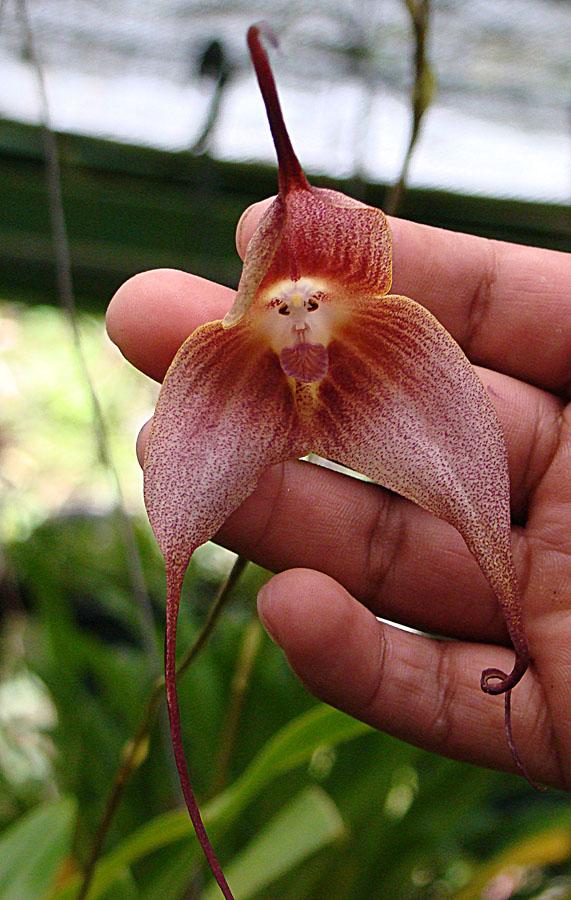
Let’s face it (pun intended), this little guy didn’t take a whole lot of imagination to name; “Dracula” because of it’s two long, fang-like petals and “simia” for its resemblance to primates. The two dark little eyes, fuzzy dotted eyebrows, and furry little nose and beard area bear striking simian similarities that become even more apparent when viewed from a distance.
The Monkey Face Orchid is rare oddity so don’t get upset if you’ve never seen one before. It is only found in the cloud forests of Peru and southeastern Ecuador at altitudes of more than 3,000 feet. It can bloom all year round, and its flowers smell like ripe oranges, making it a prized addition to any orchid connoisseurs garden.
#2. Bat plant
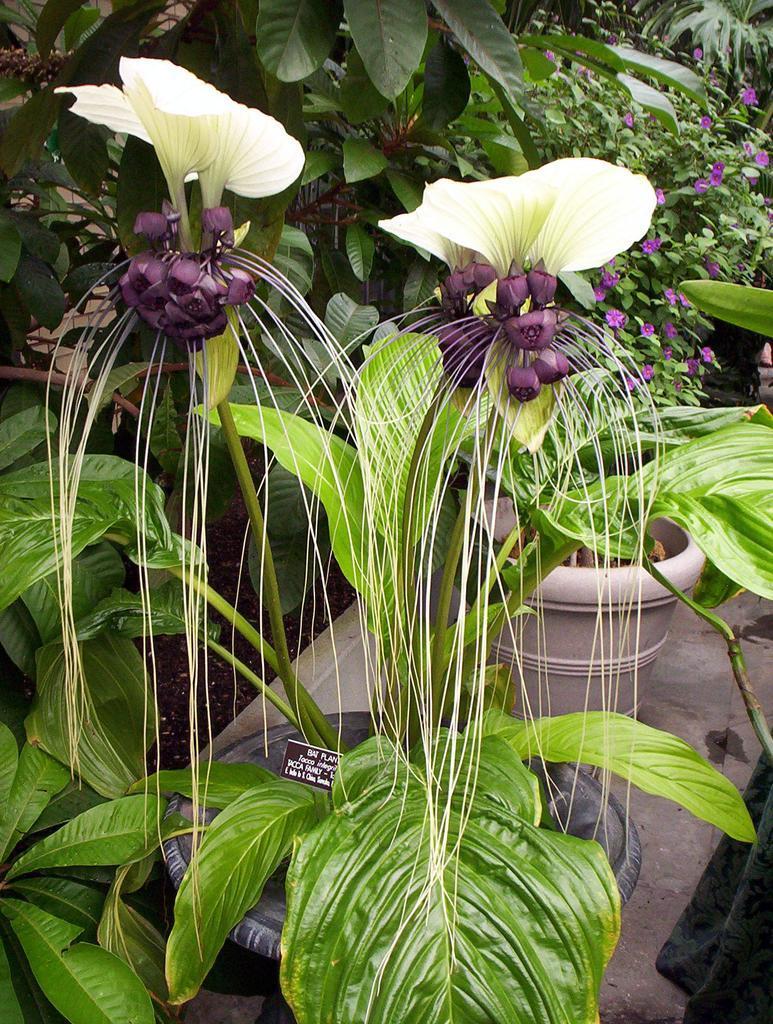
The White Bat Plant is one of the world’s largest and most unusual flowers. It’s strange little black flowers come in clusters of twenty to forty and resemble bats’ faces while the white bracts above resemble bats’ ears. The Bat Plant can grow to anywhere between 60 and 90 centimetres tall and comes in both a black version and a white version. The whiskers of the flower will also grow quite long, sometimes reaching all the way to the ground. An interesting fact about this weird wonder is that despite its resemblance to the lily it is actually a member of the yam family!
#3. Moth Orchid (Phalaenopsis amabilis)
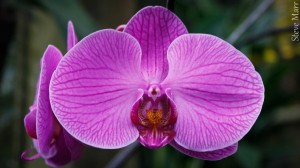
With more than 25,000 different kinds of orchids on the planet, it’s no wonder that more than a couple of them made our weird list. The Moth Orchid is the most common type of orchid and bears the name because of its supposed resemblance to a moth in flight. Native to Southeast Asia, the Philippines, and northern Australia, the Moth Orchid isn’t exactly hard to find, and it comes in nearly every colour of the rainbow. So what exactly sets it apart from its 24,999+ orchid siblings? The Moth Orchid’s uncanny ability to have multiple blooming periods— when grown in optimal conditions of course!
#4. Corpse Flower (Rafflesia keithii)

Next on our list comes a rather morbid yet beautiful flower— Rafflesia keithii, or, the Corpse Flower. There is a bit of a debate over whether or not the true corpse flower is the Rafflesia keithii or the Titan arum. If you’ve seen the movie Dennis the Menace than you may remember the flower that Mr. Wilson waited nearly 40 years to see bloom—that’s the Titan arum. The Corpse Flower of which we speak now is much rarer and can only be found in the rainforests of Indonesia. The Corpse Flower is a parasitic organism that has no visible leaves, roots or stems, causing some to argue that the Corpse Flower isn’t a flower at all—rather a fungus. In addition to its vampiric traits, the Corpse Flower is the world’s largest individual flower. Still wondering why it’s nicknamed the Corpse Flower? Let’s just say don’t breathe in its scent too deeply.
#5. Naked Man Orchid (Orchis italica)
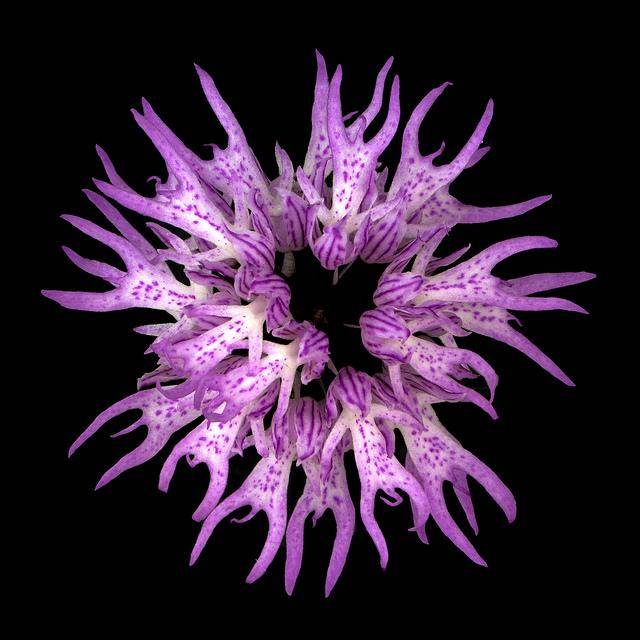
Is it an alien? Is it a sea anemone? Nope, it’s the Naked Man Orchid! This little guy (or guys) also known as the Hanging Man Orchid, are native to the Mediterranean regions and resemble tiny little hanging naked men, from their dotted eyes and smiles right down to their you-know-whats. Naked Man Orchids come in all sizes and usually, range in colour from light purplish white to deep purply-pink. The Naked Man Orchid is classified as having a threatened status, perhaps because of its popularity as an antidiarrheal, antiflatulent and aphrodisiac. Another crazy fact about these fun flowers: they’re used in making the drink Salep, also called Turkish Delight.
#6. Hooker’s Lips (Psychotria elata)

Hooker Lips, Hot Lips, Flower Lips— call them what you will— there’s no guessing how this plant got its name. The bright red bits that resemble a hooker’s bright red lips are bracts, not petals. The leaf-like bracts are only in their kissable state for a few days before opening to reveal the little yellow and white flowers within. The Hooker’s Lips Plant is native to the tropical regions of Colombia, Costa Rica, and Panama, but due to its popularity with collectors and the deforestation of its natural habitat it’s landed on the endangered list. Hope we don’t have to kiss this little beauty goodbye anytime soon!
#7. Dancing Girls (Impatiens bequaertii)
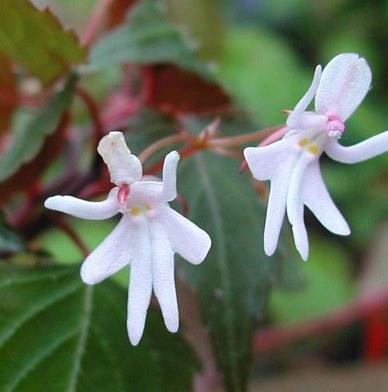
These little beauties are one of the rarest flowers around and prove quite hard to find even for the most determined plant collector. Nicknamed for their resemblance to dancing ladies in dresses, these tiny flowers are native to East Africa and come in white and light pink. The plant itself is quite petite, growing to just about one foot across and bearing blooms that max out at ½” long. Dancing Girls trail and climb, so they make lovely additions to hanging planters where you can enjoy their fabulous flowers at eye-level. Dancing Girls will root wherever they touch the soil, and they make excellent indoor plants if you can find one.
#8. Subterranean Plant (Hydnora africana)
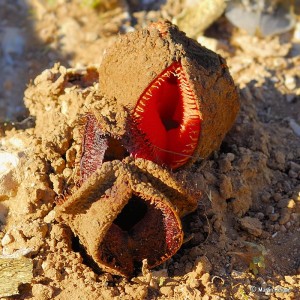
Nope, you’re not seeing things, that’s a plant, not a monster! This South African subterranean plant is truly one of the most bizarre plants on Earth. Despite its crazy look, it’s actually semi-common in the arid regions of South Africa. The Hydnora africana also called Jackal Food by the locals, has no visible leaves, roots or chlorophyll. It is strictly a parasitic, underground plant whose flowers take nearly one year to emerge from the ground. Despite its monstrous look and disgusting scent, the Hydnora africana produces tasty berries that are just delicious when baked over an open fire. The fruit also has astringent properties and has been used for preserving fishnets, for tanning, and infused in face wash as an acne treatment.
#9. Bee Orchid (Ophrys apifera)

This happy little guy gets its name from its uncanny resemblance to a smiling bumblebee; that is if bumblebees could smile. Its name comes from the Greek word “Ophrys” meaning eyebrow, perhaps referring to the fuzzy bits around the edge of the flower. The Bee Orchid is widespread across Europe the Middle East and even North Africa. However, it’s becoming more and more scarce because the propagation process is so complicated. You see, the Bee Orchid requires a symbiotic relationship with a particular type of fungus to successfully grow, making transplanting tough. This orchid is more clever than it appears; the flowers are almost exclusively self-pollinating in the northern ranges, but the colouring and shape of the flower mimic the look and smell of a female bee which entices male bees towards it to mate, thus expediting the pollination process!
#10. Swaddled Babies (Anguloa uniflora)
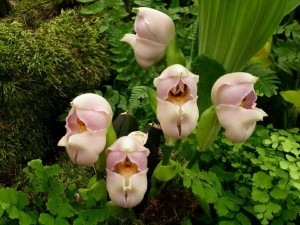
Too cute! These tulip orchids, nicknamed Swaddled Babies, were discovered in the Colombian Andes between 1777-1788 during a ten-year expedition but weren’t named and officially classified until 1798. During certain times of the plant’s blooming stage, the flowers’ unique shapes resemble that of a baby all wrapped up in white swaddling. Their tempting scent attracts insects to the hinged lip of the petal where the unsuspecting creatures are shoved into the column, where a pack of pollen then attaches itself to their abdomens, increasing pollination.
#11. Parrot Flower (Impatiens psittacina)

If you’ve never seen a Parrot Flower before you’re not alone. The Parrot Flower, a Thailand native, is classified as endangered and therefore not allowed to leave the country. The neat thing about the flower of this rare species of balsam is that when you look at its side profile, it looks just like a parrot or cockatoo in flight! Funny thing is, when images of this flower began to circulate across the Internet they were dismissed as being “digitally manipulated” or Photoshopped because very few people had actually seen one since they are so extremely rare in the wild, and it’s illegal to remove them
#12. Snap Dragon Seed Pod (Antirrhinum majus)
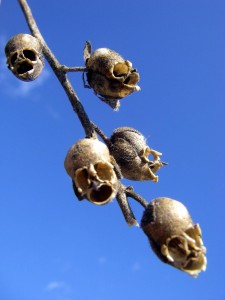
If you’ve ever had any doubt as to whether or not a flower is a living creature, here’s the proof! Many gardeners and horticulturists are fond of Snapdragons for their bright colors and fragrance—not to mention if you squeeze the sides of a Snapdragon flower it looks like a dragon’s mouth opening and closing— but not so many gardeners and horticulturists know about the dragon skulls that are left once the Snapdragon has gone to seed! Interestingly enough, in ancient times, people believed Snapdragons held mystical powers, and that and that growing them in one’s garden would protect one’s home from curses and evil. These tiny, perfect little skulls are quite a reminder of the circle of life, wouldn’t you say?
#13. Flying Duck Orchid (Caleana major)
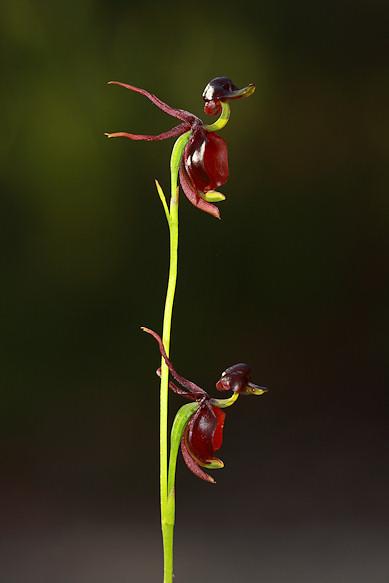
This fowl orchid is just too cute! Native to Australia, this orchid’s unique shape helps increase its pollination. Sawflies are attracted to its scent and land on the “bill”, where their weight forces them down and inside the flower, temporarily curling the “bill” down and in. From there, the only way out is through a pollen-laden section of the flower where the sawfly finds and then emerges from. You’d think such a unique looking flower would be easy to find. However, it’s reddish brownish colouring makes it blend right into the Australian bush. Want to add the Flying Duck Orchid to your home greenhouse? Sorry! This flower only grows in the wild, in Australia, and has never been propagated. Why you ask? Because in order to grow, it depends symbiotically on a particular type of vegetative fungus that only grows in Australia. It’s an excellent excuse to go on a vacation, though!



















